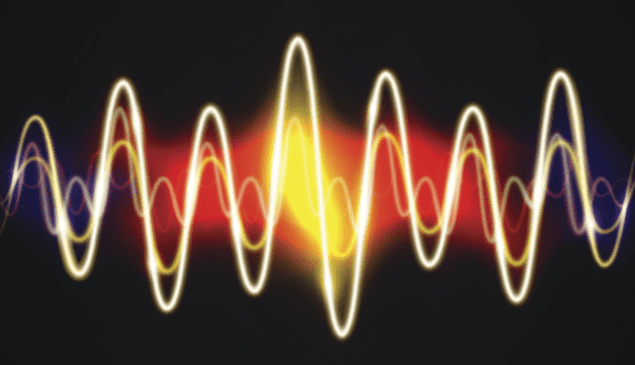
A new experiment that tests the limit of how large an object can be before it ceases to behave quantum mechanically has been proposed by physicists in the UK and India. The measurement involves trapping a nanocrystal with light and then measuring its position to see if its behaviour violates the Leggett-Garg inequality – which is a test of the quantum nature of a system. While the team is keen to have their proposal tested in the lab, not all physicists believe that it could be implemented.
A crucial important feature of quantum mechanics is Heisenberg’s uncertainty principle. Whereas in classical mechanics, both the position and momentum of an object can be determined at arbitrarily high precision at the same time, the principle states that it is impossible to measure both position and momentum in quantum mechanics beyond a certain degree of accuracy. Furthermore, the more you know about one measurement, the more uncertain the other becomes.
The proposed experiment tests how large an object can be before the rules of quantum measurement do not apply. Sougato Bose of University College London and colleagues at the Bose Institute and the SN Bose National Centre for Basic Sciences in Kolkata studied the behaviour of a quantum linear harmonic oscillator, which bears a strong resemblance to its classical counterpart. “The uncertainties in position and momentum are both as low as they can get,” explains Bose.
Caught in a trap
Bose and colleagues have done an analysis of a hypothetical experiment involving a cooled nanocrystal oscillating in a trap that is created by an optical harmonic potential. The experiment can detect which side of the trap is occupied by the nanocrystal at any instant by focusing a beam of light on one side of the trap. The light causes fluorescence in the nanocrystal, and if fluorescent light is not detected it can be concluded that the nanocrystal is in the other side of the trap – a procedure called negative result measurement.
The experiment begins with a position measurement and then the system evolves for about a microsecond before the position is measured again. If the nanocrystal is a purely classical object, the researchers reasoned, a negative result in the first measurement would not affect the nanocrystal’s position in the second measurement. This is because the nanocrystal would have been in the other half of the trap, and therefore would not have interacted with the beam. If there were quantum uncertainty in the position and momentum of the nanocrystal, however, the null result at the start of the experimental run could still affect its measured position at the second measurement. This is because the nanocrystal’s position would not be well defined until it was actually measured. Therefore, the nanocrystal could have interacted with the light beam in one half of the trap despite not being detected there.
The team calculated the Leggett-Garg inequality for the systems. This is analogous to Bell’s inequality, which is famously used to rule out hidden variable explanations of quantum mechanics. Bell’s inequality quantifies the maximum statistical correlation that is possible between properties of independent particles separated by distances so great that information could not pass between them without travelling faster than light.
The Leggett-Garg inequality uses similar reasoning to calculate the maximum statistical correlation between two results that had not influenced each other. Violation of the inequality, therefore, would show that the nanocrystal’s state could be influenced by the earlier negative result, and therefore that the nanocrystal is a quantum, rather than a classical, object. Crunching the numbers, the researchers calculated that it should be feasible to detect non-classical behaviour in objects with masses up to around 1010 amu or about 10-14 g. Bose says experimentalists are planning to test this.
“That’s pretty tricky”
Bose and colleagues report their results in Physical Review Letters. Theoretical physicist Clive Emary of Newcastle University in the UK says “if someone goes on to do these experiments, we’ll all look back and say it was a significant paper”. He cautions, however, that: “it looks like it needs very high time resolution to do the proposed measurements and in my experience that looks like the kind of thing you propose to experimentalists and they come back and say ‘that’s pretty tricky’.” Quantum information theorist Renato Renner of ETH Zurich is more optimistic: “We can now do experiments in quantum technologies that, five or ten years ago, people would have said were not possible,” he says, “I’m optimistic that most quantum experiments we can think of will at some point be feasible.”
Emary and Renner agree, however, that, whereas in Bell’s inequality, the two measurements are isolated classically by the fact that nothing that can travel faster than the speed of light, the Leggett-Garg inequality relies on proving there can be no classical explanation for the earlier measurement disturbing the later one. “That’s just not possible,” says Emary, “There’s always a loophole: you could disturb the air molecules in the lab next door and they could come back and disturb your system, for example.”



